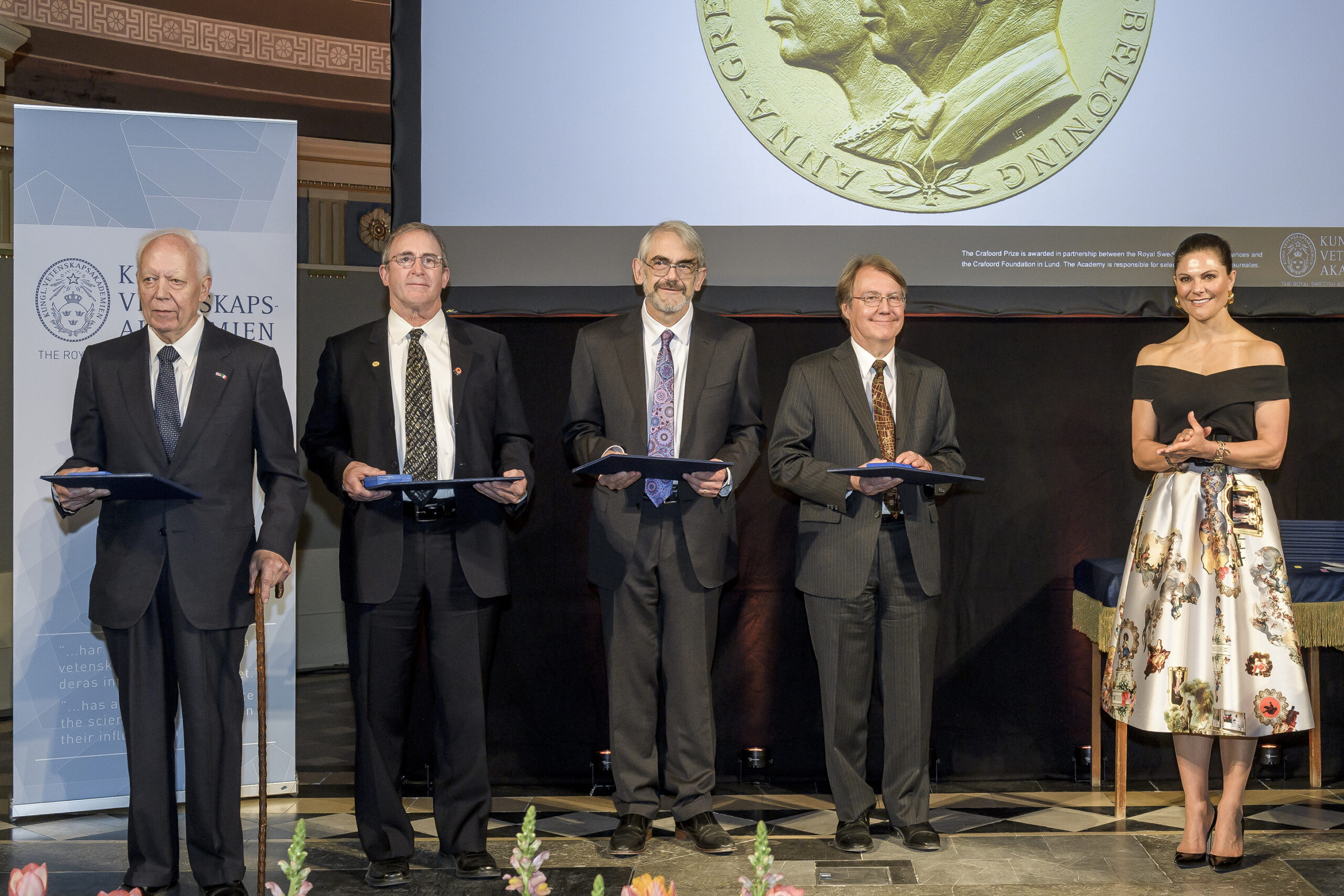Andrew Knoll has depicted the first three billion years of life on Earth using his studies of microfossils and innovative methods to illuminate their biochemical evolution. In recognition of his work, the Royal Swedish Academy of Sciences is awarding him the Crafoord Prize in Geosciences for 2022, worth six million Swedish kronor.
Andrew Knoll, professor of natural history at Harvard University, USA, receives this year’s Crafoord Prize in Geosciences “for fundamental contributions to our understanding of the first three billion years of life on Earth and life’s interactions with the physical environment through time”.
For billions of years, Earth was an inhospitable place with an atmosphere full of gases such as methane and ammonia. Life comprised unicellular organisms that primarily lived off the chemical energy found in their surroundings. Cyanobacteria that developed photosynthesis were decisive steps forward, as they used sunlight to transform carbon dioxide and water into biomass and free oxygen. Over time, a diversity of species arose and the world became a greener, more oxygen-rich place.
How did this actually occur, and how did life on Earth evolve over its first three billion years? These are the issues on which Andrew Knoll has provided fundamental insights. He has developed and combined methods for geological, biological and chemical analysis, which are now widely used by researchers around the globe. Using these methods, he has succeeded in determining the age of strata in bedrock and studied microscopically tiny fossils of unicellular and multicellular organisms from deep time.
“Andrew Knoll is an incredibly versatile researcher who has taught and inspired many younger researchers in his field, and those who have followed in his footsteps have further added to our knowledge of how life developed on Earth,” says Stefan Bengtson, member of the Royal Swedish Academy of Sciences’ Class for geosciences.
In addition, Andrew Knoll is one of the researchers who have presented a feasible explanation for the third mass extinction, which happened 252 million years ago. More than 90 per cent of all species in the oceans and 70 per cent of land animals disappeared. The proposed cause is volcanoes in Siberia that emitted huge amounts of carbon dioxide into the atmosphere, leading to toxic environments and an increase in the average temperature on Earth. He has also described how life returned after this disaster, in the form of many new plants and animals.
“I was born curious and have always felt that discovery provides ample reward for curiosity. To receive the Crafoord Prize is beyond aspiration, both humbling and deeply appreciated”, Andrew Knoll comments on the award.
About the Prize
The Crafoord Prize is one of the major international science prizes and is awarded in partnership between the Royal Swedish Academy of Sciences and the Crafoord Foundation in Lund. The Academy is responsible for selecting the laureates. The disciplines are selected as a complement to the Nobel Prize; they alternate every year, between mathematics and astronomy, geosciences, biosciences and polyarthritis. This year’s Laureate in Geosciences receives six million Swedish kronor.
About the Laureate
Andrew H. Knoll was born on 23 April 1951 in West Reading, Pennsylvania, USA, and received his PhD in geology from Harvard University in 1977. He is currently Fisher Professor of Natural History at the Department of Earth and Planetary Sciences, Harvard University, Cambridge, Massachusetts, USA. For the past twenty years, he has been part of the research team that helps NASA analyse geological finds in the form of data and images from Mars.

